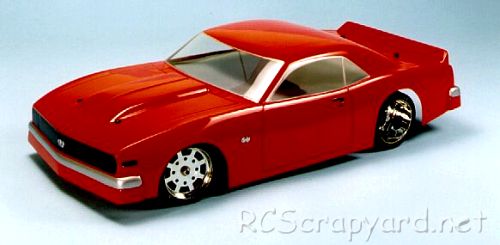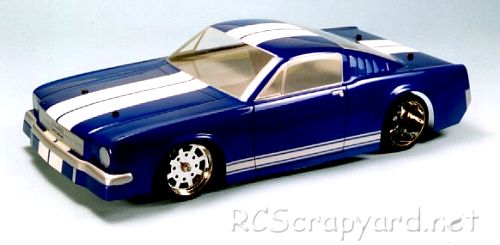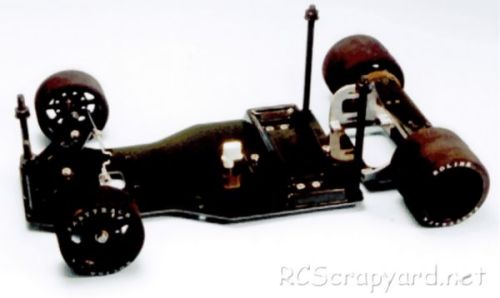

|
|
|


|
|
1/10 Scale Electric Rally/Touring Car:
Bolink Muscle Cars - Radio Controlled ModelHistory and Info:
Introduced by Bolink circa 1997, the Muscle Cars were based on the narrow version of the Sport 2000 chassis and was available in two kit options: 68 Camaro - # BL-1321-C - or 65 Mustang Fastback - # BL-1321-F - and came with chrome wheels and special "Muscle Car" decals.
▼ Scroll Down for More Images ▼
|








|
|
|

★ Bolink 68 Camaro - # BL-2262 Body ★

★ Bolink 65 Mustang Fastback - # BL-2263 Body ★

★ Bolink Muscle Cars Chassis (Sport 2000) ★

|
Buying a Used Bolink Muscle Cars
|
|
Manufacturers and Brands Catalogued, Listed and Reviewed by RC-Scrapyard.
At present, the RC Model Manufacturers, Brands and Distributors covered by us are: ABC Hobby, Academy, Acme Racing, Agama Racing, Amewi, Ansmann Racing, ARRMA, Team Associated, Atomic RC, Axial, AYK, Bolink, BSD Racing, Capricorn, Carisma, Carson, Caster Racing, Cen, Corally, Custom Works, Durango, Duratrax, ECX - Electrix, Exceed RC, FG Modellsport, FS-Racing, FTX, Fujimi, Gmade, GS-Racing, Harm, HBX, Helion, Heng Long, Himoto Racing, Hirobo, Hitari, Hobao, Hong-Nor, Hot Bodies, HPI, HSP, Intech, Integy, Jamara, JQ Products, Kawada, Kyosho, Losi, LRP, Maisto, Mardave, Marui, Maverick, MCD Racing, Megatech, Mugen, New Bright, Nichimo, Nikko, Nkok, Ofna, Pro-Pulse, Protech, PTI, RC4WD, Redcat Racing, RJ-Speed, Robitronic, Schumacher, Seben, Serpent, Smartech, Sportwerks, Step-Up, Tamiya, Team-C Racing, Team Magic, Thunder Tiger, Tomy, Top Racing, Traxxas, Trinity, Tyco, Vaterra RC, Venom, VRX Racing, WLToys, X-Factory, Xmods, Xpress, Xray, XTM, Yankee RC, Yokomo, ZD Racing and Zipzaps. |
|
Hints, Tips and Information
Dampers
Dampers, Shock Absorbers, Shocks - call them what you will, they are one of the least understood, but most important tools you have for adjusting the handling characteristics of your RC model.
So how do Dampers work?
Basically what you have is a small amount of silicone oil contained in a sealed cylinder. Through the centre of that cylinder is a metal rod, and on the end of that rod, a piston with a number of small holes in it. Pulling, or pushing the rod in and out of the cylinder, your will notice a certain amount of resistance as the oil is forced through the holes in the piston. |
|
Hints, Tips and Information
On Road Tires for Tarmac
Modern day RC Model Rubber Tires for tarmac racing, generally come in wide or narrow format and in three compounds - Soft, Medium and Hard, each compound corresponding to different track temperatures. |
|
RC Models:
|
Radio & Motors: |
Other
Accessories: |